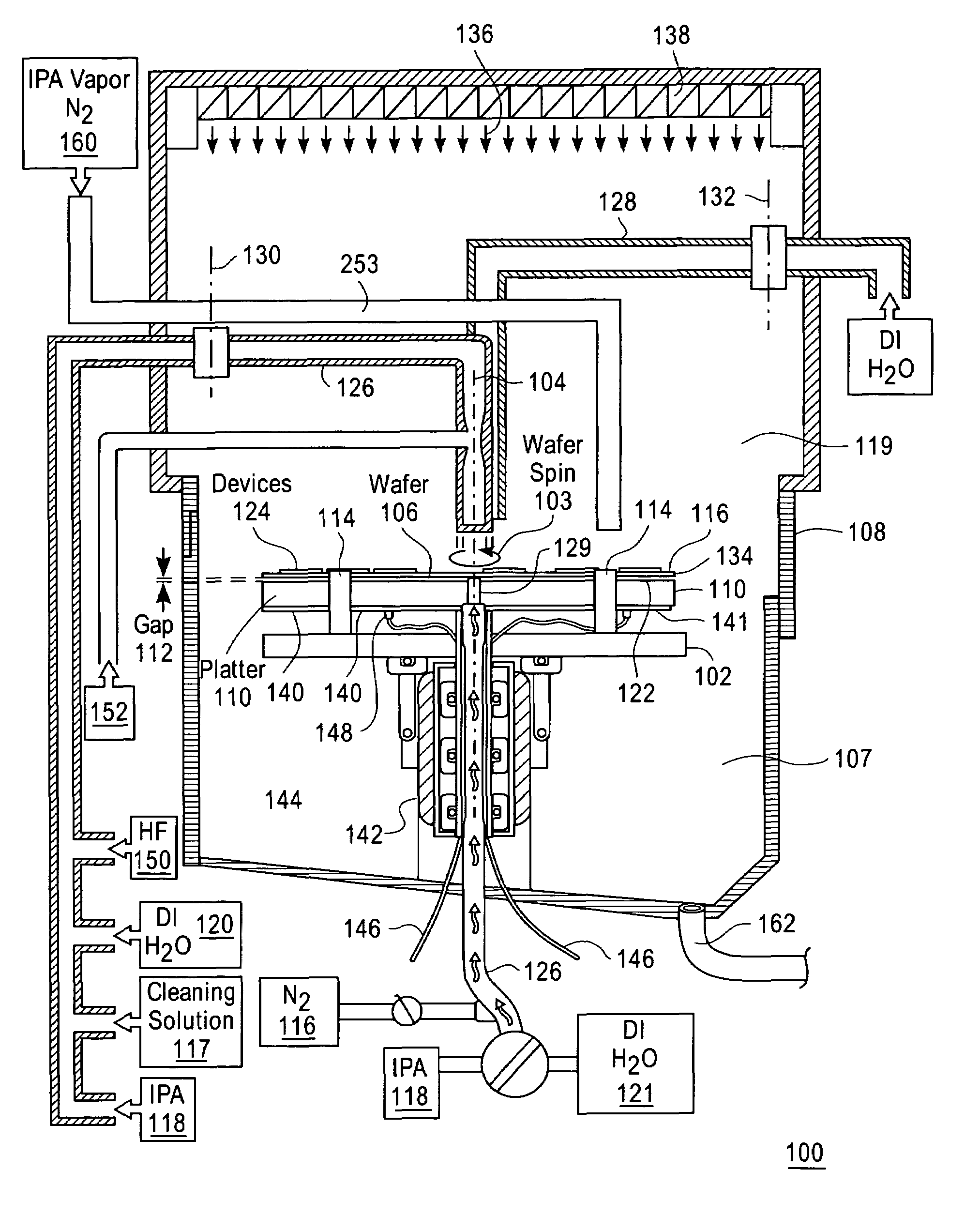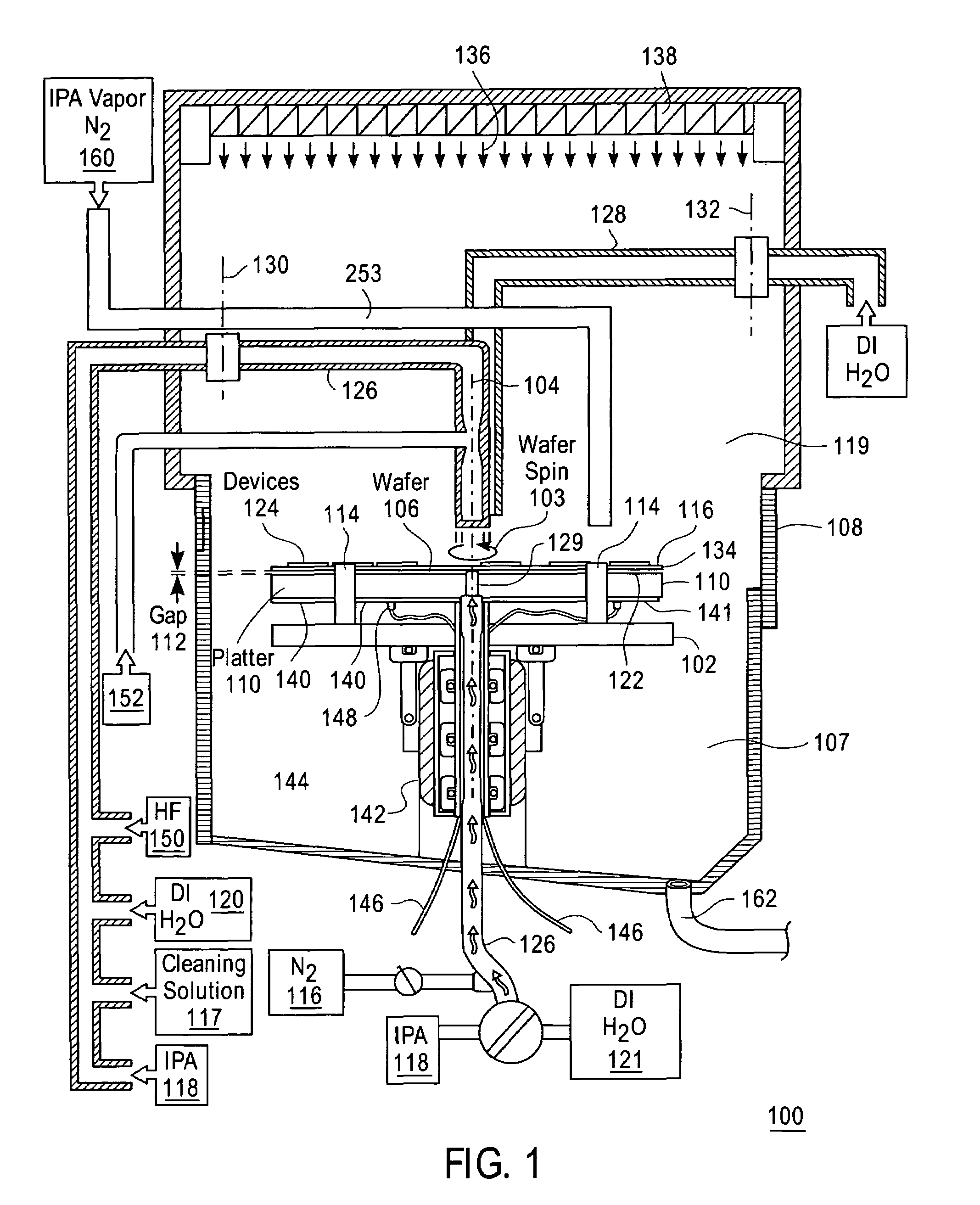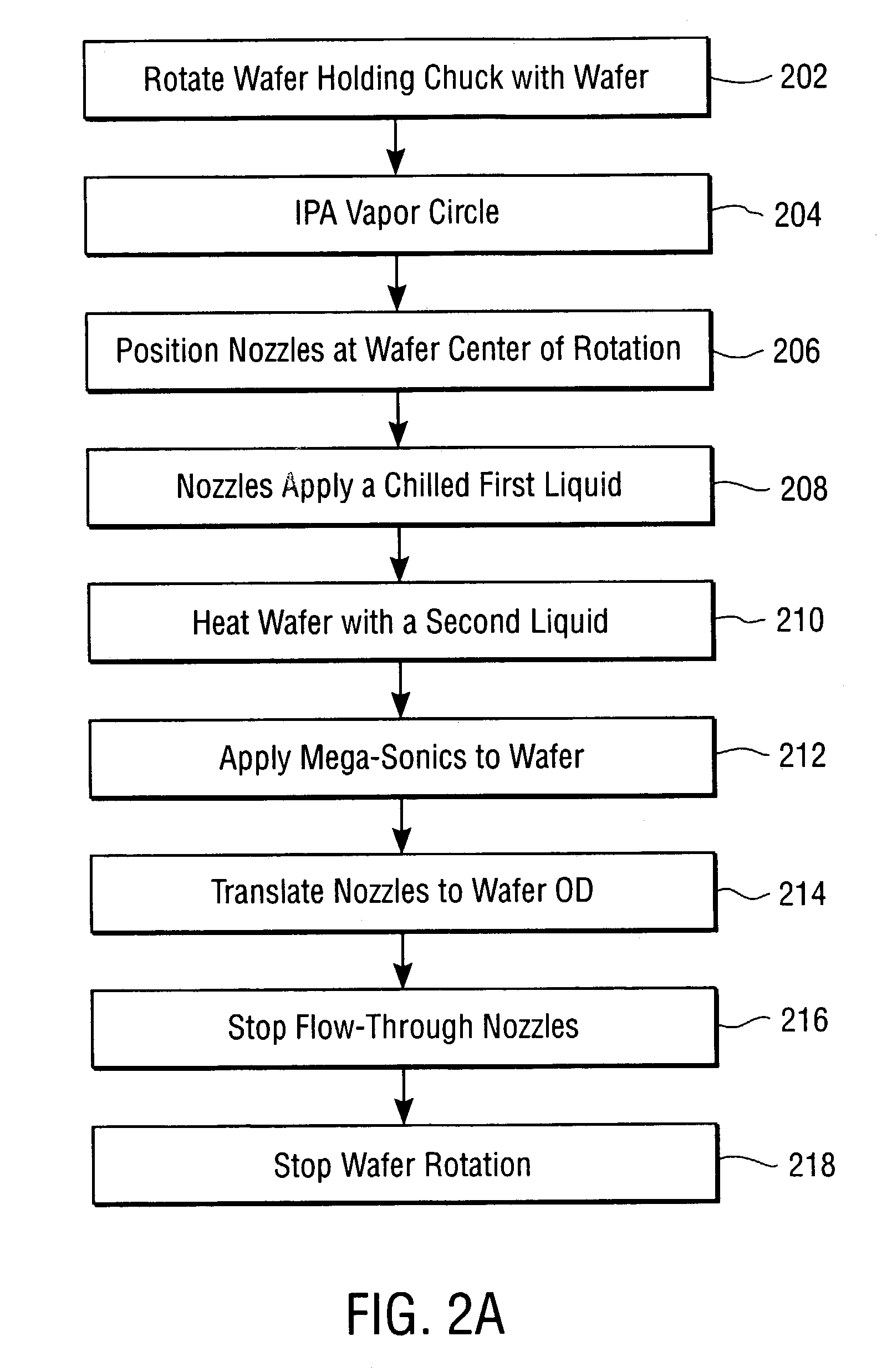Rotational thermophoretic drying
a thermophoretic drying and rotational technology, applied in the direction of cleaning processes and equipment, cleaning using liquids, lighting and heating equipment, etc., can solve the problems of malfunctioning devices, inability to use both methods, and inability to work well for both methods, so as to reduce watermarking
- Summary
- Abstract
- Description
- Claims
- Application Information
AI Technical Summary
Benefits of technology
Problems solved by technology
Method used
Image
Examples
Embodiment Construction
[0014]A method to provide rotational thermophoretic drying of a wafer within a single wafer cleaning chamber is disclosed. The method to use rotational thermophoretic forces in a wafer dry cycle can remove particles on the wafer surface, such as, for example, to provide watermark-free rotational drying of patterned or blanket hydrophobic semiconductor wafers.
[0015]During wafer cleaning, a cleaning or rinse solution can be applied to one or both sides of a wafer positioned in a rotatable platter. The cleaning process, such as an RCA-type cleaning process, can be applied to the wafer and after which, a final (last) hydrofluoric acid (HF) etch can be accomplished. A rotational thermophoretic drying process can then be performed.
[0016]Thermophoretic forces can be exerted on particles through the generation of a temperature gradient. The thermal gradient can cause the repulsion of small colloidal sized particulates, suspended in a surrounding (cooler) liquid layer, away from a (hotter) w...
PUM
| Property | Measurement | Unit |
|---|---|---|
| thickness | aaaaa | aaaaa |
| frequencies | aaaaa | aaaaa |
| frequencies | aaaaa | aaaaa |
Abstract
Description
Claims
Application Information
 Login to View More
Login to View More - R&D
- Intellectual Property
- Life Sciences
- Materials
- Tech Scout
- Unparalleled Data Quality
- Higher Quality Content
- 60% Fewer Hallucinations
Browse by: Latest US Patents, China's latest patents, Technical Efficacy Thesaurus, Application Domain, Technology Topic, Popular Technical Reports.
© 2025 PatSnap. All rights reserved.Legal|Privacy policy|Modern Slavery Act Transparency Statement|Sitemap|About US| Contact US: help@patsnap.com



